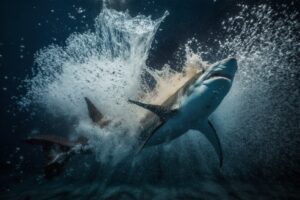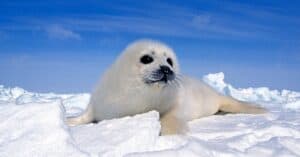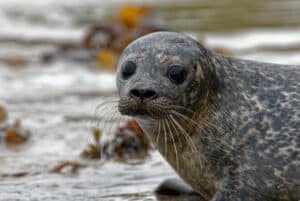Seals are semi-aquatic marine animals, also known as pinnipeds. They are made up of three diverse groups, accounting for the 33 types of seals around the world. The three groups include Otariidae (sea lions and fur seals), Phocidae (true seals), and Odobenidae (walrus). Seals are excellent swimmers and use this to their advantage, especially when escaping predators. But how fast can seal swim? The answer to this question depends on the specie, size, and swimming style.
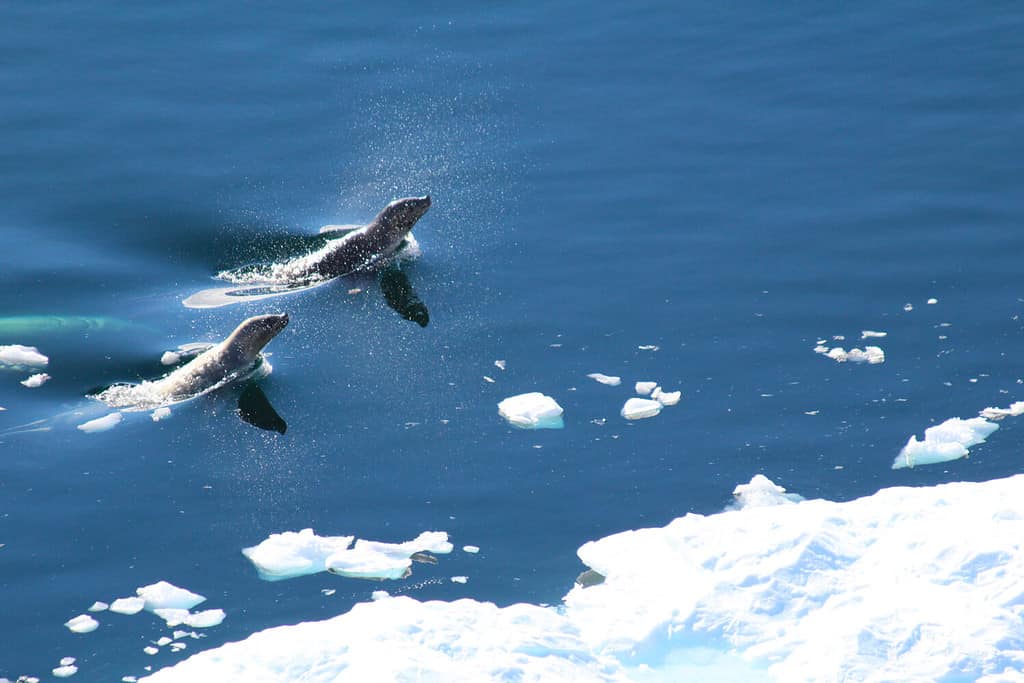
Seals are semi-aquatic marine animals, also known as pinnipeds.
©Marco Ramerini/Shutterstock.com
How Do Seals Swim?
Interestingly, seals have evolved two ways of swimming, despite inhabiting the same environment and with similar behaviors. For example, one group primarily uses their feet to push through the water, while others use their flippers to propel them. Researchers find this really strange because both groups are descendants of the same ancestor. For example, seals that mainly occur in the northern hemisphere, like harbor and gray seals (true seals), use their feet to propel them through the water. However, leopard seals, huge predators that occur in Antarctica, use their streamlined front flippers to hunt down speedy penguins. Furthermore, sea lions and fur seals belong to the group Otariids, inhabiting the waters of the southern hemisphere in places like Australia. They have elongated paddle-like front flippers, which help them fly through the water.
The differences in the swimming styles of these two groups of seals are so great researchers originally believed they evolved from separate ancestors. However, genetics disproved this theory and showed they came from the same group of animals.
How Fast Can Seals Swim?
Seals need to swim fast to catch their prey and avoid predators. But how fast can seals swim? Gray seals can swim between 14 to 23 mph, while fur seals can swim up to 15 mph. Every part of a fur seal’s body is covered in fur except its flippers, which help them stay cool in warm weather. However, it also makes them fast and efficient swimmers.
Leopard seals can swim at speeds of 25 mph even though they weigh a whopping 1,300 pounds and measure 10 feet long. Their bodies are elongated and slender, but their heads are large and appear too big for their bodies, which are streamlined. Additionally, they have large fore flippers, which is why they can fly through the water.
Types of Seals
There are 33 species of seal worldwide, including:
Leopard Seal
These large seals occur in the Antarctic, inhabiting the circumpolar area. However, a small group inhabits a nearby island beyond the circumpolar area throughout the year. Furthermore, some leopard seals have been sighted in South Africa, Australia, New Zealand, and South America. But, they primarily occur in the icy waters of the Antarctic.
These predatory seals are diurnal, so they are most active during the day. While they are mainly solitary, they do form groups when mating, and mothers stay with their pups until they are ready to go off on their own. Additionally, leopard seals spend most of their time in the water and can spend between 15 to 30 minutes beneath the surface. Astonishingly, they fall asleep underwater and unconsciously come up for air without waking up. These seals hunt in shallow water; they do not like diving too deep. They make noises beneath the surface, like growling, trills, grunting, and low-frequency moans.

Leopard seals spend most of their time in the water and can spend between 15 to 30 minutes beneath the surface.
©iStock.com/Bkamprath
Antarctic Fur Seal
These fur seals are widely distributed in the Southern Ocean near the Antarctic Convergence. Their main breeding spots are located in South Georgia and the sub-Antarctic islands. However, they disperse widely when at sea. Antarctic fur seals spend a lot of their time in the ocean, constantly looking for prey. When they are not mating, females travel long distances in the open ocean for long periods of time. But, on land, they like to occupy rocky habitats on beaches or areas of vegetation.
These seals are solitary except when molting and breeding. They are similar to leopard seals, as they are mostly terrestrial. Despite their awkward way of moving on land, they are faster than humans when navigating slippery rocks and through dense grass. While they spend their breeding season on land, once the pups are weaned, they flock to the oceans, where they spend the winter months. Unfortunately, researchers don’t know a lot about where they go or whether they migrate or disperse. However, some juveniles and adult males stay on land throughout the whole year.
Antarctic fur seals usually stay beneath the surface for two minutes when looking for food. When they communicate, males use two main calls. One is a huffing sound they use while moving around the breeding territories when interacting with females. Researchers believe it is a sign of status. The other call is a threatening roar directed at other adult males to warn of predators or threats. While females can also make these two calls, they primarily communicate with their pups using high-pitched calls. Additionally, they secrete a smell to establish a bond with their pups.
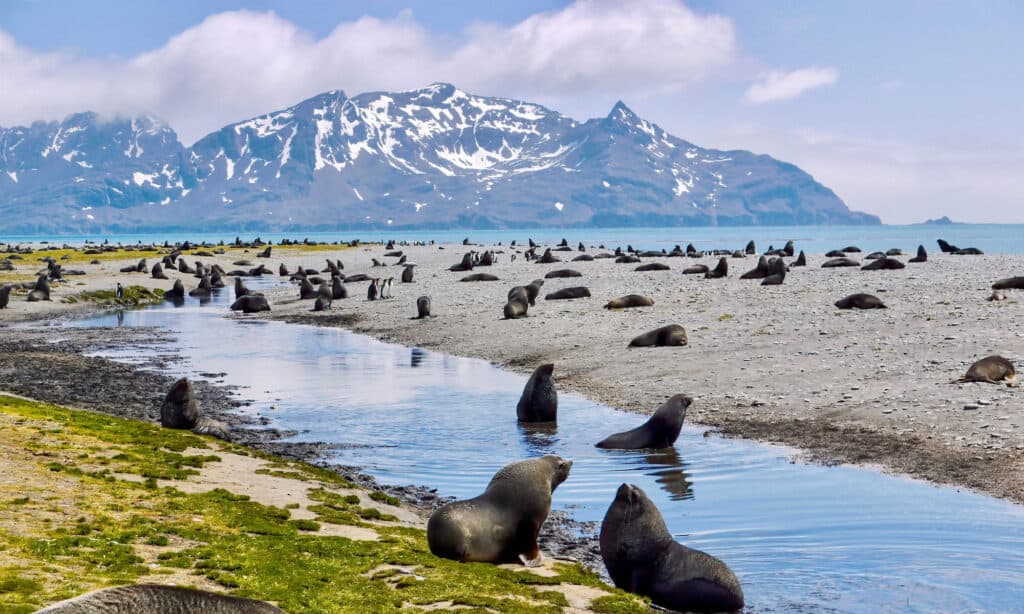
Antarctic fur seals spend a lot of their time in the ocean, constantly looking for prey.
©iStock.com/Cheryl Ramalho
Steller Sea Lion
These sea lions occur along the northern coast of California, up to Alaska, and on the Japanese and Russian coasts. They prefer to inhabit the cooler waters of the North Pacific Ocean, relaxing on the beaches of rocky coastlines. They are usually social animals and live in large groups in rookeries or on beaches. The groups typically consist of two to twelve sea lions, but some contain up to 100 seals. However, they are solitary or occur in small groups when they are out at sea.
Steller sea lions are mostly nocturnal and forage in pelagic waters or near the shore. Furthermore, they travel long distances during a season and can dive around 1300 feet. However, they are not classified as migratory animals. They only move onto land to mate, molt, give birth, and rest.
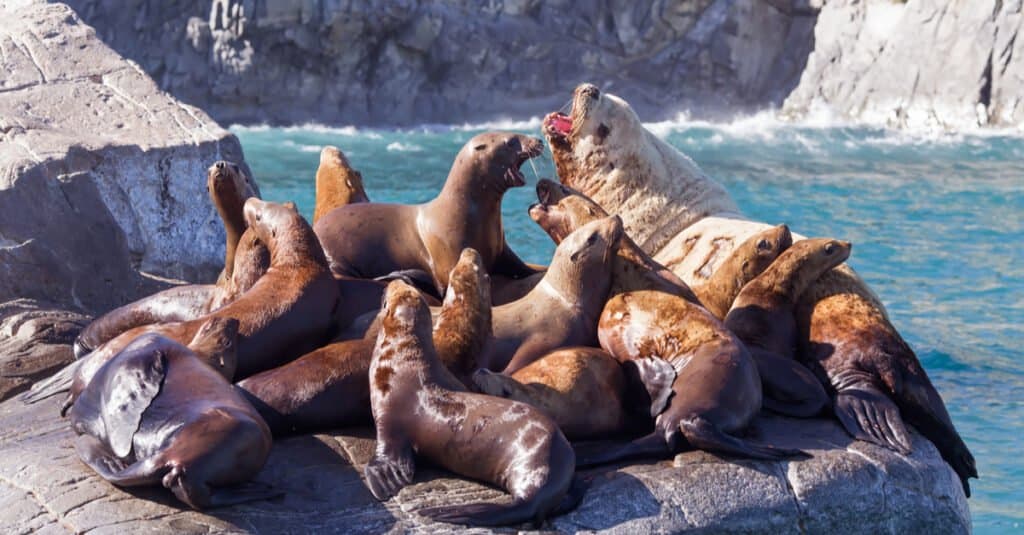
Steller sea lions are mostly nocturnal and forage in pelagic waters or near the shore.
©Alexander Machulskiy/Shutterstock.com
Spotted Seal
These seals occur in areas around the North Pacific Ocean from the Bering Sea to the Sea of Okhotsk, Yellow Sea, Sea of Japan, and Bohai Sea to Alaska’s coast. Additionally, they inhabit areas in the northern Arctic Ocean. Spotted seals occur on the southern edge of the pack ice from winter until early summer until they move to coastal areas, like river mouths, for summer and fall. While they mainly haul out of ice, these seals sometimes move ashore on beaches, sand bars, and areas along the Asian coast, where they breed on tiny, isolated islands.
Unfortunately, very little is known about spotted seals because they aren’t very tolerant of humans, and their wariness makes them hard to track. As soon as these seals sense any potential threat, they will dive under the water, out of sight. Spotted seals are mostly solitary for large portions of the year. However, they often haul out on ice or shores with several individuals or in large groups.
These seals’ mating habits are unusual as they are annually monogamous instead of polygynous like other seal species. This means breeding pairs stay together for a year until the pup is weaned. Once the female is ready to mate again, she goes in search of a different mate.
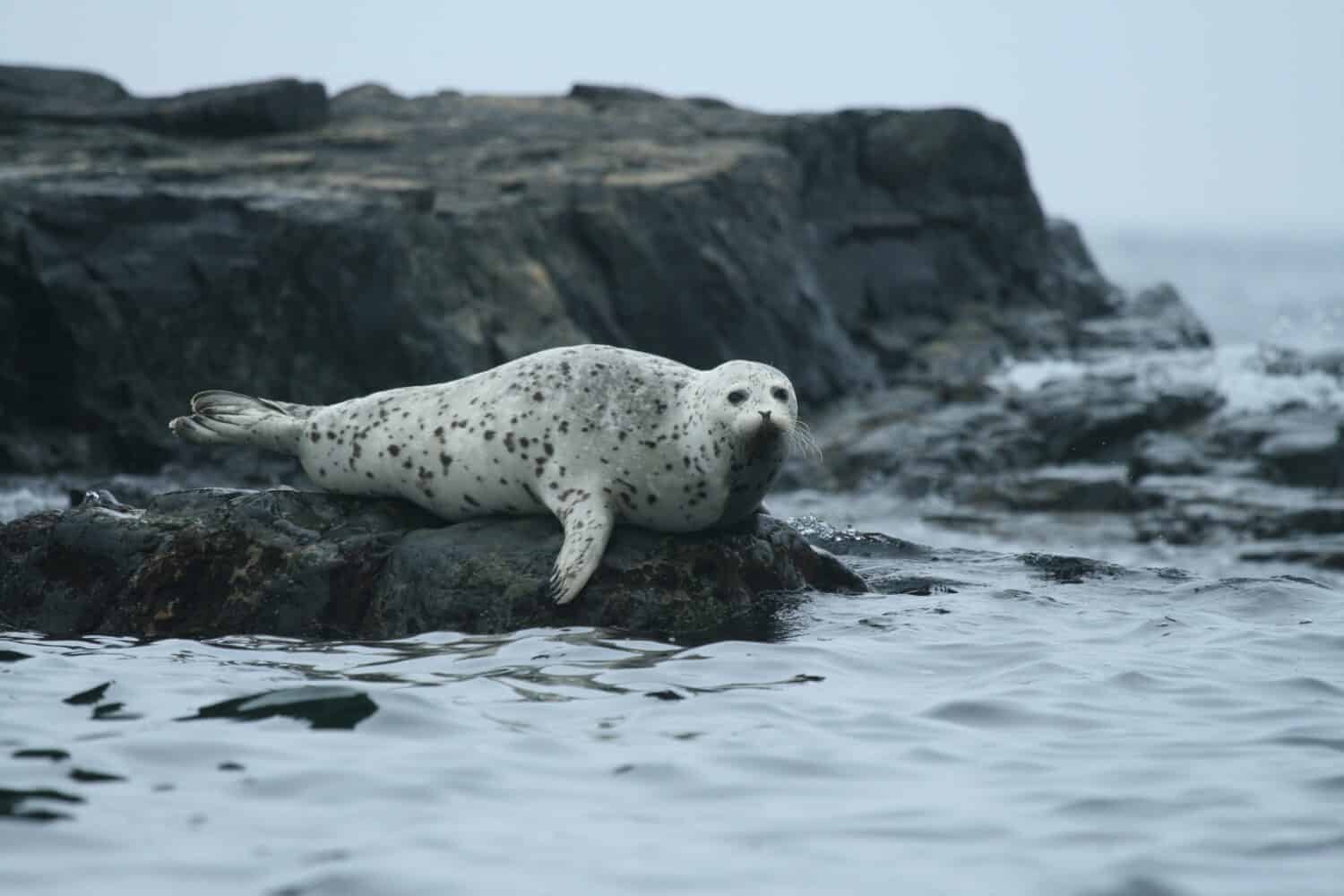
Unfortunately, very little is known about spotted seals because they aren’t very tolerant of humans, and their wariness makes them hard to track.
Image: Valerijs Novickis, Shutterstock
©Valerijs Novickis/Shutterstock.com
The photo featured at the top of this post is © Ulrike Jordan/Shutterstock.com
Thank you for reading! Have some feedback for us? Contact the AZ Animals editorial team.




